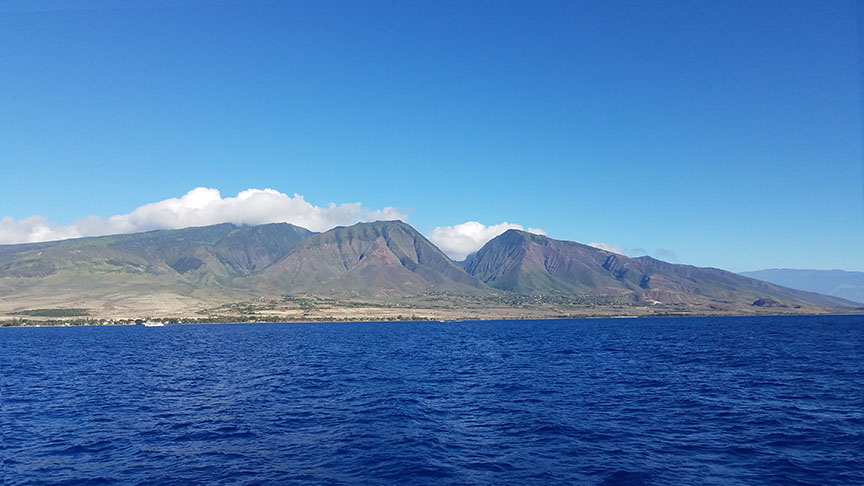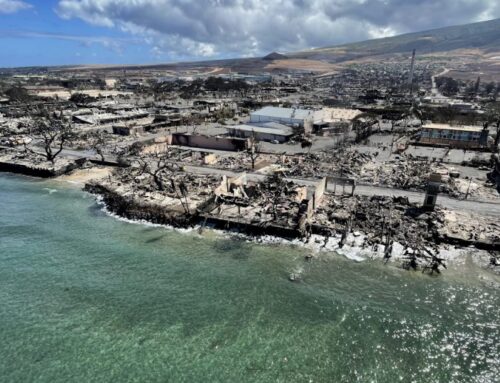While not a full list of the all of the happenings and news on the island in 2019, Here are some of the headlines that attracted the most attention.
Blazin’ hot. Even though 2019 was the Chinese year of the pig, the year may be better remembered as the year of fire. Weather, including record breaking heat, combined with fallow fields contributed to blazes across 25,000 acres- more than five times as many as in 2018.
Growing green business. Maui Brewing Company was recognized for investing over $9 million in renewable energy and energy efficiency technologies, working toward becoming grid independent.
Tending fields. Going into 2019, hopes were high for the newly formed entity Mahi Pono LLC, the partnership that bought 41,000 acres of mostly fallow Central Maui farmland the previous year. Arguments over water usage, a farm manager that lasted just 16 weeks, a dusty lack of cultivation exacerbated by summer fires and loss of a crop to hungry wild pigs were just some tribulations. However, with more crops in the fields, including allotments for small community farms, plus an amiable agreement to use less than one-third the water of its predecessor, pastures are looking greener for the company and its place in the community.
High real estate values. Real estate prices continued to be strong throughout 2019. Historically low mortgage interest rates helped buyers, but a lack of inventory kept sales moderate. Properties that came on the market did not last long.
The 2019 median single-family home price of $741,355 is 4% higher than in 2018. The average home price came in at $1,081,560, an increase of 5.7% over last year. At $515,500 median condo price also climbed 3.1% over last year. Average sale price of $700,943 was a 3.1% decline over the previous year. Affordability for local residents continued to be a major topic of discussion.
*Data from Realtors Association of Maui, January 6, 2020.
Maui’s expensive construction project. The County Council spent a good deal of time grappling with the Wailuku Civic Complex. Phase I, budgeted at $44M, started in the fall with infrastructure projects and will continue into 2020 with a 428-stall parking structure. The embattled second phase of the project, consisting of a three-story civic building and plaza and a $40M price tag, is currently on pause.
Tourism: Too much of a good thing? The year started out with a 13% jump in Maui hotel room rates, followed by Southwest Airlines entering the Hawaii market in April, including direct flights to Maui. The overall number of lodging units on Maui totaled 21,367 units, comprising more than a quarter (26.5%) of the state’s visitor accommodation units (hotel and condos), second behind Oʻahu.
However, as the island’s visitor numbers keeps climbing, so have tensions regarding impacts on the environment and local residents. Popular areas like Makena State Park, Haleakala, Molokini islet and the road to Hana are all looking at or implementing measures to moderate visitation.
The Maui Community plan estimated 43,100 in Maui visitor population in 2020, the actual number today is closer to three million annually. Resident population estimates are pretty accurate at 169,540, meaning there are approximately 30% more visitors on the island than residents at any given time.
*Visitor statistics from the Hawaii Visitors Bureau 2019 preliminary report
Killing weeds. The County and State is urged to stop using Glyphosate- the main ingredient in weed killer Roundup. The County experiments with eliminating the chemical from parks and schools. Meanwhile Roundup maker Monsanto/Bayer is ordered to pay $10.2M for illegal pesticide use on Maui.
Medicinal weed. Two things regarding marijuana were implemented in 2019- Visitors to the state were allowed to start purchasing medical marijuana at dispensaries. Also, Hawaii has decriminalized possession of 3 grams or less of marijuana, which took effect January 1 of 2020.
Visualizing Sea Level Rise on Maui. One of the effects of climate change, the Sea Level Rise Viewer showed us how parts of Maui will be underwater as early as the mid-century.
Tiny Frogs. Coqui frog eradication efforts go into full swing with a million dollars in public funds.
And…Action! Maui sees production of its latest film shot on island, Stefan Shaefer’s new film Aloha Surf Hotel.
Thousands March. An estimated crowd of 7,000 people march on Maui in support of the kia‘i on Maunakea- the controversial protests on Hawaii Island against the construction of the Thirty Meter Telescope.
Maui goes to the Supreme Court. After losing twice in lower courts, the Maui County Council agrees to settle a lawsuit over its use of injection wells that pump partially treated sewage into the ocean, harming the reef. However Mayor Michael Victorino refuses to sign off on the agreement, appealing the issue to the U.S. Supreme Court, potentially setting a dangerous precedent across the nation for wastewater management. Community groups expressed concern that it would give polluters loopholes for disposing of wastewater. The county said that the settlement of the lawsuit would be infeasible and result in a lack of clarity.
Charter Crisis. After the County Council vote to settle the Lahaina Injection Wells lawsuit, the mayor argues that he doesn’t have to follow their decision. Others disagree that he is able to do this, causing a Crisis of the Charter, now at the local courts for a decision.
A happy ending. After going missing for 17 days following a technology-free run in the Makawao Forest Reserve, Amanda Eller was rescued.






